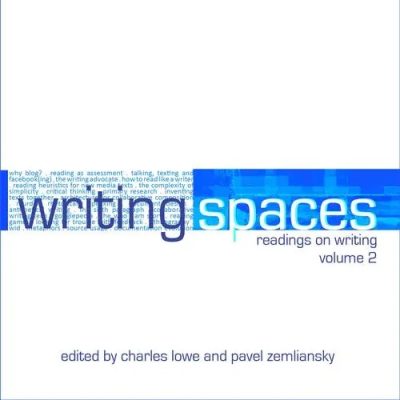3 Catherine Savini’s “Looking for Trouble: Finding Your Way Into a Writing Assignment”
Writing Spaces Volume 2
In this chapter, Savini examines how identifying a useful problem can be used to develop a strong argumentative thesis. The chapter outlines a process whereby students locate a unique problem that they find especially meaningful, then articulate the details of that problem, pose fruitful questions related to the problem, and identify the stakes of the problem. Savini analyzes this process at work by examining an essay by critic bell hooks wherein a specific problem is used as the genesis for an argumentative essay. This chapter is especially helpful for learning how to generate research topics and formulate original arguments.
“Though it may seem counterintuitive at the outset, one way to diminish the considerable difficulty of getting started on a new assignment is to look for something that troubles you, seek out difficulty, find problems. All academic disciplines seek to impart in their students the ability to identify, mull over, and sometimes solve challenging problems. Not surprisingly, the benefits of a willingness and mental acuity to greet complex problems extend well beyond the classroom.”
MLA Citation Examples
Works Cited
Savini, Catherine. “Looking for Trouble: Finding Your Way Into a Writing Assignment.” Writing Spaces: Readings on Writing Volume 2, edited by Charles Lowe and Pavel Zemliansky, 2011, pp. 52-70.
In-text citation
“Though it may seem counterintuitive at the outset, one way to diminish the considerable difficulty of getting started on a new assignment is to look for something that troubles you, seek out difficulty, find problems. All academic disciplines seek to impart in their students the ability to identify, mull over, and sometimes solve challenging problems. Not surprisingly, the benefits of a willingness and mental acuity to greet complex problems extend well beyond the classroom.” (52-53).
References
Savini, C. (2011). Looking for trouble: Finding your way into a writing assignment. In Charles Lowe and Pavel Zemliansky (Eds.), Writing spaces: readings on writing, vol. 2 (pp. 52-70). New York: Parlor Press.
In-text citation
“Though it may seem counterintuitive at the outset, one way to diminish the considerable difficulty of getting started on a new assignment is to look for something that troubles you, seek out difficulty, find problems. All academic disciplines seek to impart in their students the ability to identify, mull over, and sometimes solve challenging problems. Not surprisingly, the benefits of a willingness and mental acuity to greet complex problems extend well beyond the classroom.” (Savini, 2011, p. 52-53).
Chicago Citation Examples
Bibliography
Savini, Catherine. “Looking for Trouble: Finding Your Way Into a Writing Assignment,” in Writing Spaces: Reading on Writing Volume 2, ed. Charles Lowe and Pavel Zemlianksy (New York: Parlor Press, 2011), 52-70
In-text citation
“Though it may seem counterintuitive at the outset, one way to diminish the considerable difficulty of getting started on a new assignment is to look for something that troubles you, seek out difficulty, find problems. All academic disciplines seek to impart in their students the ability to identify, mull over, and sometimes solve challenging problems. Not surprisingly, the benefits of a willingness and mental acuity to greet complex problems extend well beyond the classroom.” (Savini, 2011, 52-53).


